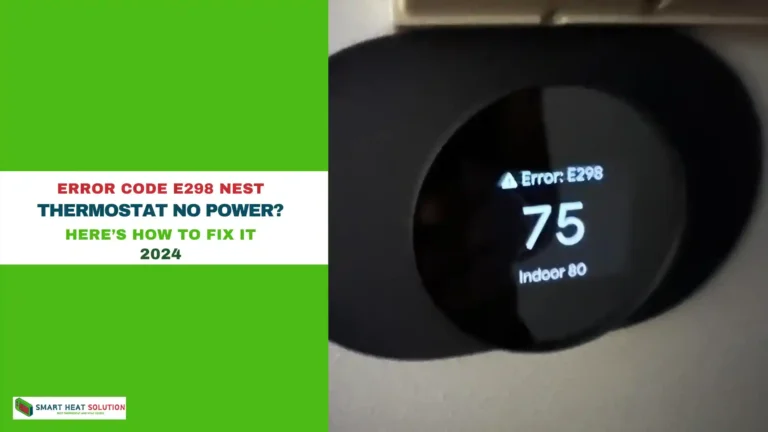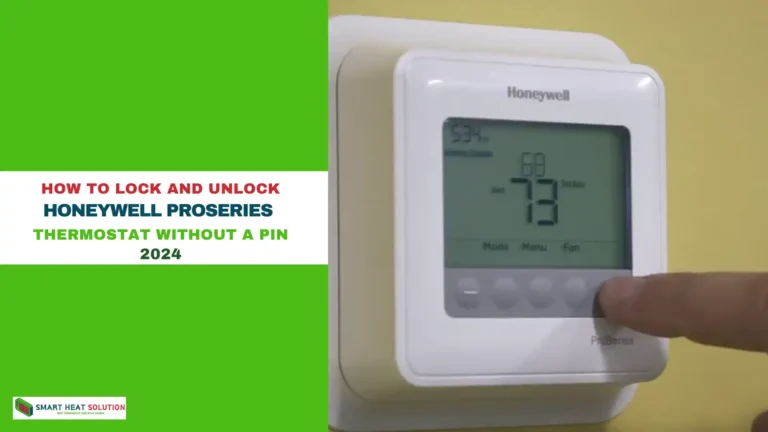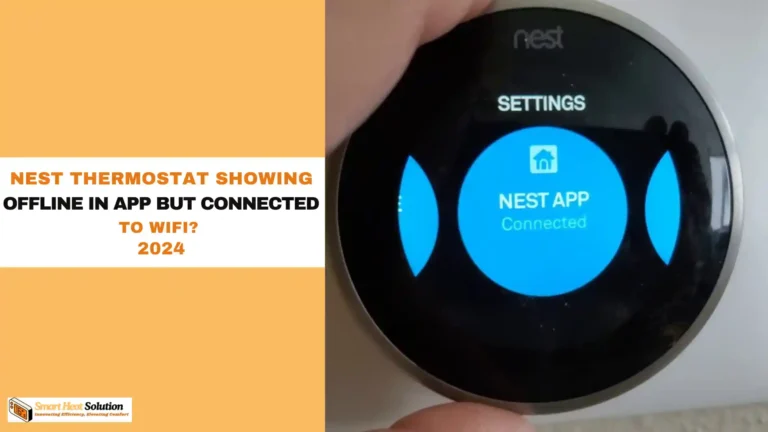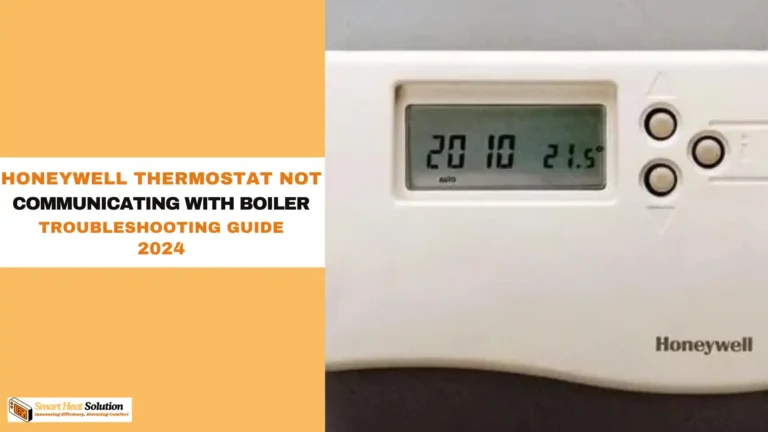What Is Honeywell Thermostat Following Schedule in Recovery?
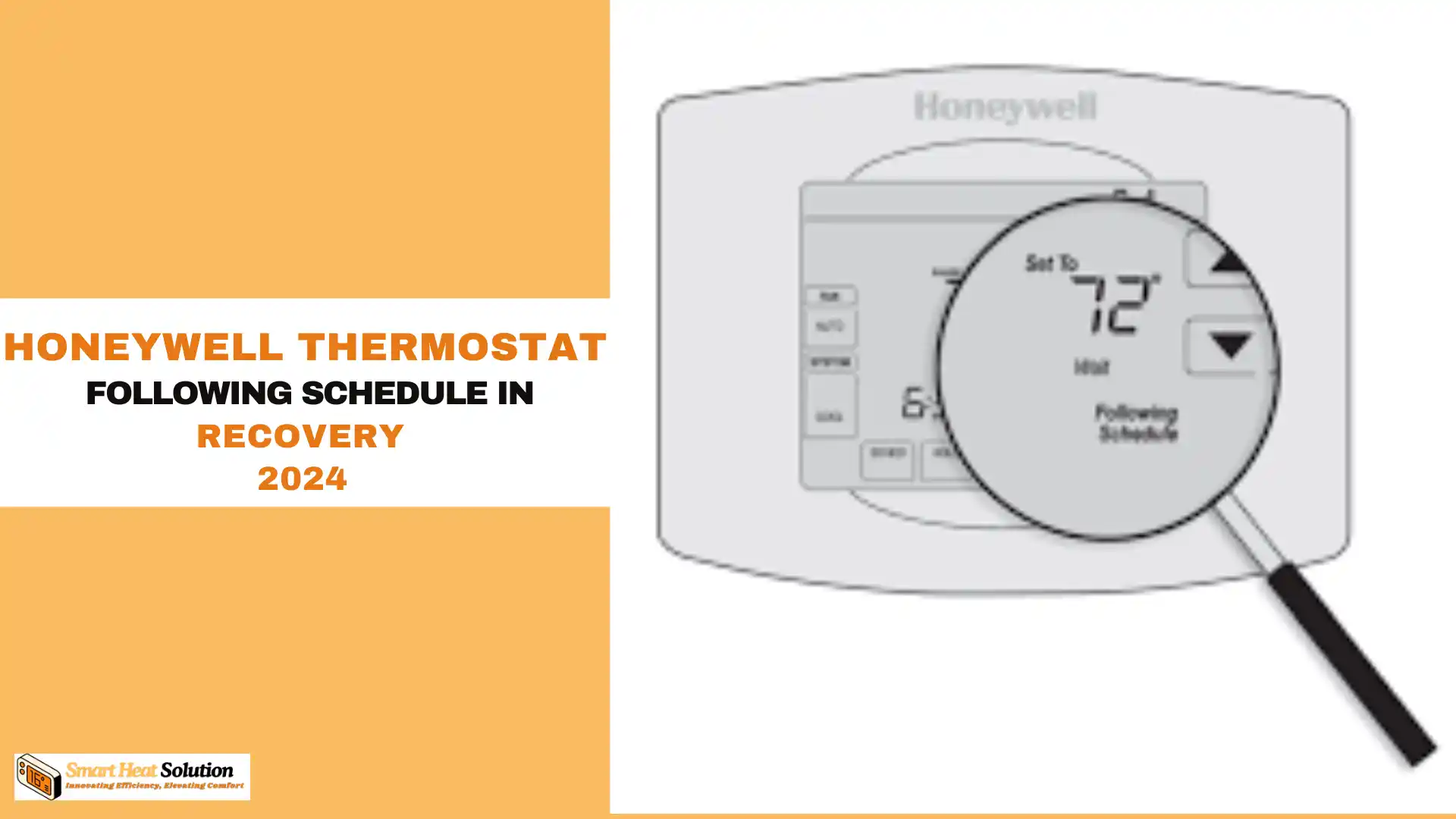
When it comes to home comfort, your Honeywell thermostat plays a vital role in maintaining the perfect temperature.
One feature that sets Honeywell thermostats apart from many others is the “Recovery” mode. If you’ve ever noticed your thermostat is in recovery mode, you may have wondered what exactly this means and how it impacts your scheduled settings.
Let’s dive into this in detail to help you understand what Honeywell thermostat following schedule in recovery means and how to optimize your system for maximum efficiency.
What is a Honeywell Thermostat?
A Honeywell thermostat is a device used to maintain a desired temperature within a building. Modern Honeywell thermostats, especially those with smart and programmable features, are designed to optimize heating and cooling systems for energy efficiency and comfort.
What is Recovery Mode on a Honeywell Thermostat?

Recovery mode is an energy-saving feature built into many Honeywell thermostats. When your thermostat is in recovery mode, it is actively working to bring your home to the desired temperature set in your schedule before the time you set.
This means, if your thermostat knows you want the temperature to be 72°F by 7:00 AM, it will gradually adjust the heating or cooling beforehand so that the room reaches this temperature by the set time, not after. This ensures your home is comfortable when you wake up or return from work.
Recovery mode is smart in that it doesn’t just start at the scheduled time; instead, it learns how long it takes to adjust the temperature based on factors like current indoor temperature, outdoor conditions, and system efficiency.
It’s especially useful when you’re switching between energy-saving modes and comfort modes.
How Does Recovery Mode Affect the Thermostat’s Schedule?
When recovery mode kicks in, your thermostat is following your preset schedule but with some adjustments. Here’s how it works:
- Following the schedule: The thermostat follows the temperature changes you’ve programmed, but instead of waiting until the exact time you’ve set, it starts adjusting earlier.
- Learning mode: Some Honeywell thermostats, especially those with adaptive intelligent recovery (AIR), learn how long your HVAC system takes to heat or cool your space over time. With this learning, it can optimize the pre-heating or pre-cooling process to ensure comfort and efficiency.
- Energy efficiency: By starting the recovery process early, the thermostat prevents rapid temperature changes, which can be taxing on your HVAC system. This helps maintain an even, energy-efficient performance.
Why Is My Honeywell Thermostat in Recovery Mode?
Seeing your Honeywell thermostat in recovery mode can sometimes be confusing if you don’t expect it. But this feature is nothing to worry about—it’s just your thermostat doing its job. There are several reasons your thermostat may be in recovery mode:
- Coming out of an energy-saving period: If your thermostat was set to a lower (or higher) temperature during a time when you were away or asleep, it may need some time to adjust to the more comfortable temperature before you return home or wake up.
- Learning your system’s efficiency: For newer installations or recent settings changes, your thermostat might be learning how long it takes your HVAC system to reach the desired temperature.
- Temperature swing correction: Recovery mode also helps to avoid drastic temperature swings. Rather than cooling or heating at the last minute, it brings the temperature closer to the target gradually.
What is the Honeywell thermostat schedule?
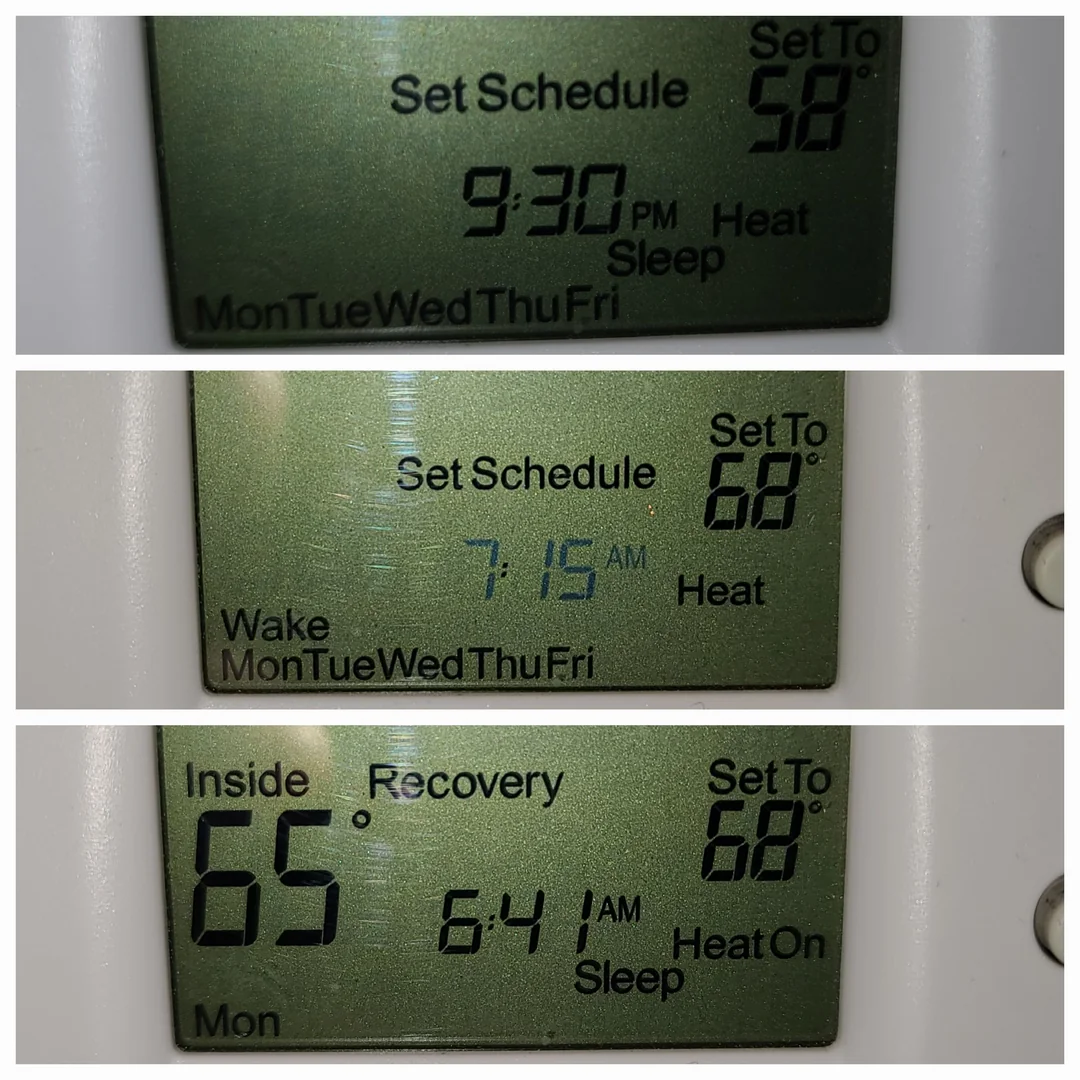
Now, The Honeywell thermostat schedule is a feature that allows users to set specific heating and cooling temperatures for different times of the day and week.
It helps optimize energy usage and comfort by letting you program temperature changes based on your daily routines. For example, you can set the thermostat to lower the temperature when you’re asleep or away from home and raise it before you wake up or return.
This scheduling can be adjusted through the thermostat interface or a connected app, depending on the model.
Why Is My Honeywell Thermostat Out of Sync?
If your Honeywell thermostat is not sticking to the schedule you’ve set, it could be due to its recovery mode or other underlying issues. Here are some of the common causes and how to fix them.
Common Reasons Your Honeywell Thermostat Isn’t Following the Schedule
There are several reasons why your Honeywell thermostat might seem out of sync:
Incorrect Programming
You might have accidentally programmed the schedule wrong. This can cause the thermostat to enter recovery mode at unexpected times, throwing off your heating and cooling preferences.
High Temperature Sensitivity
Certain Honeywell models react too quickly to changes in your home’s temperature, making them enter recovery mode more often than necessary. This can cause the thermostat to seem like it’s not following the schedule.
System Settings Interference
Features like the “Auto” setting may disrupt your schedule. These smart features are designed to optimize efficiency but can sometimes lead to confusion or undesired changes in the thermostat’s behavior.
Outdated Firmware
If your thermostat’s firmware hasn’t been updated, it may struggle to follow the schedule correctly. Ensuring that your thermostat has the latest firmware can resolve various issues, including scheduling problems.
Is Honeywell Thermostat Recovery Mode a Problem?
Recovery mode is actually a feature, not a glitch. It helps your thermostat reach the set temperature by the programmed time, increasing both comfort and energy efficiency. However, if it’s not something you need or if it’s interfering with your comfort, it can certainly be inconvenient.
How to Fix Honeywell Thermostat Scheduling Issues
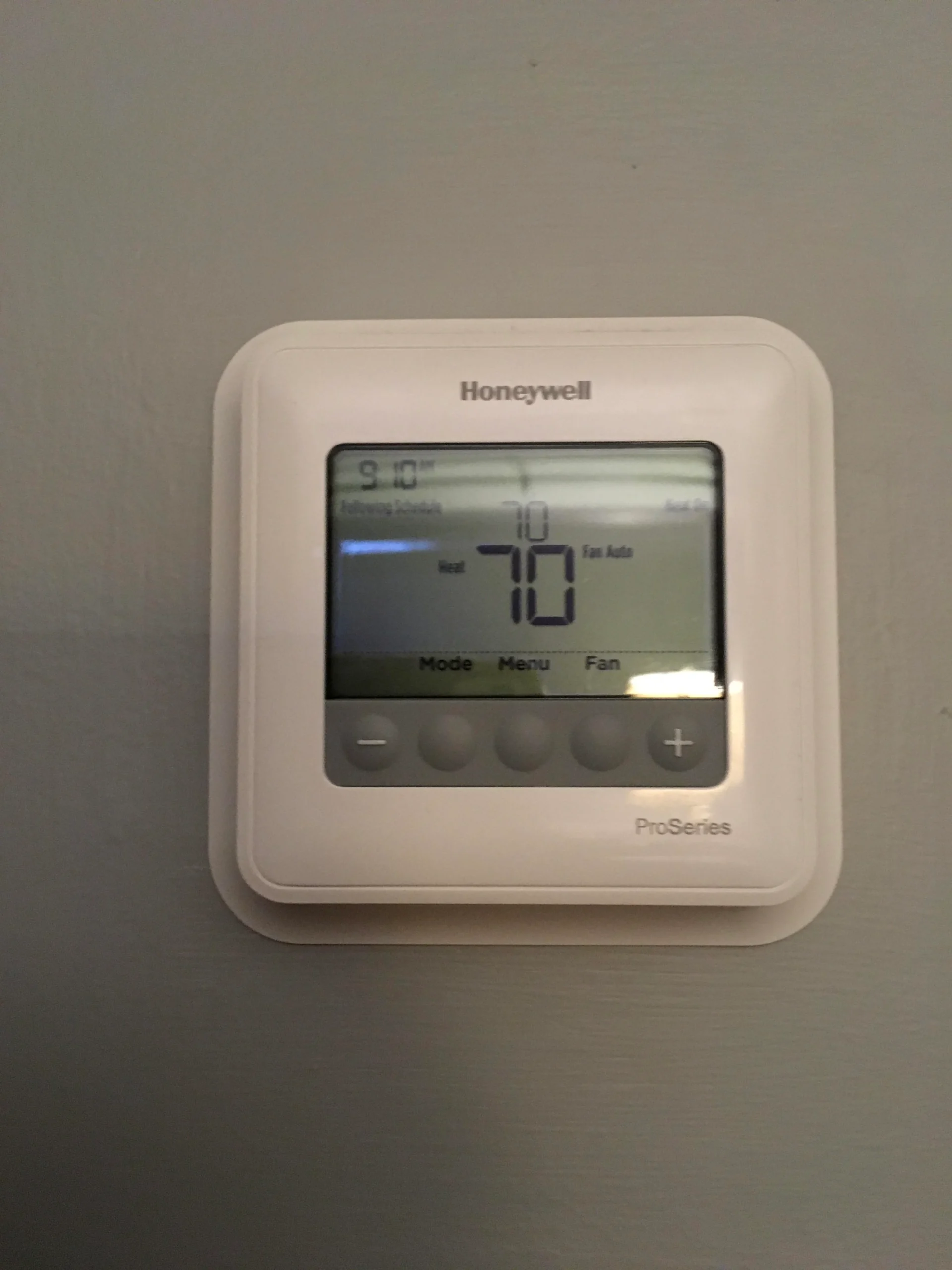
Thankfully, resolving these issues doesn’t require calling in a professional. Here’s a step-by-step guide to help you get your thermostat back on track.
Step 1: Double-Check Your Schedule
First things first: make sure your thermostat is programmed correctly.
- Open the programming menu on your Honeywell thermostat.
- Verify that each time and temperature setting aligns with your desired schedule.
- Adjust any incorrect settings to better suit your comfort preferences.
Step 2: Turn Off Recovery Mode
If recovery mode continues to disrupt your schedule, consider turning it off temporarily.
- Access your thermostat settings.
- Locate the recovery mode option.
- Toggle it off and see if your thermostat follows your schedule as expected.
Step 3: Adjust Temperature Sensitivity
Some Honeywell models allow you to tweak how sensitive the thermostat is to temperature changes.
- Go into the temperature control settings.
- Modify the sensitivity to better fit the temperature fluctuations in your home.
This can help prevent unnecessary entries into recovery mode.
Step 4: Update the Firmware
Firmware updates can fix bugs and improve performance, including scheduling issues.
- Check your user manual for instructions on how to verify if your firmware is up to date.
- If there’s an available update, follow the steps provided to install it.
Step 5: Perform a Factory Reset (Last Resort)
If all else fails, a factory reset might solve the issue—but proceed with caution, as this will erase all custom settings.
- Find the reset option in the thermostat’s menu.
- Confirm the reset and then reprogram your thermostat from scratch, ensuring that you set the correct schedule this time.
Can You Disable Recovery Mode on a Honeywell Thermostat?
For some homeowners, recovery mode might not be ideal. Maybe you’re focused more on saving energy than on achieving a perfect temperature at a specific time, or perhaps you find it confusing to see the system behaving differently than expected. Fortunately, most Honeywell thermostats allow you to disable recovery mode if you prefer.
Here’s how you can disable it:
- Access the settings: On most models, go to your thermostat’s settings menu. This is usually done by tapping the menu or gear icon.
- Navigate to preferences: Look for a section labeled “Smart Response” or “Adaptive Intelligent Recovery”. These are the terms Honeywell often uses for the recovery feature.
- Turn off the feature: Select the option to disable or turn off recovery mode. Depending on your model, this setting may have different labels, such as “off” or “manual mode.”
Keep in mind that turning off recovery mode means your home might not be at the perfect temperature the moment your schedule switches, but this can help reduce energy use if that’s a bigger priority for you.
How Does the Recovery Mode Work in Scheduled Thermostat Operations?
Initiating Recovery Mode
- Pre-emptive Action: Before a scheduled temperature change, the thermostat enters recovery mode. This period is calculated based on the system’s performance and the desired set-point.
- Gradual Adjustment: During recovery, the thermostat gradually adjusts the temperature to ensure it reaches the scheduled set-point precisely on time. This approach minimizes abrupt heating or cooling surges.
Visual Indicators of Recovery Mode
- Display Messages: Thermostats typically display “Recovery” or “Following Schedule in Recovery” to indicate this mode.
- Icons or Lights: Some models may also use specific icons or lights to visually signal recovery mode.
Benefits of Using the Recovery Mode in Your Scheduled Thermostat Operations
- Energy Efficiency: By gradually adjusting temperatures, recovery mode optimizes energy consumption, reducing unnecessary spikes in heating or cooling.
- Enhanced Comfort: Ensures your home is at the desired temperature when needed, enhancing overall comfort and convenience.
- System Longevity: Reduces wear and tear on your HVAC system by avoiding frequent extreme temperature changes.
Customizing and Managing Recovery Mode for Optimal Performance
Adjusting Recovery Time
- Understanding Your System: Knowing how long your HVAC system takes to change temperatures is key. This might require some trial and error.
- Manual Adjustments: Refer to your thermostat’s manual for instructions on how to adjust the recovery period. This may involve tweaking the “Recovery Time” or similar settings.
Overriding Recovery Mode
- Temporary Changes: If you need to override the scheduled temperature temporarily, simply adjust the thermostat manually. It will automatically readjust to the schedule once the temporary setting is cleared.
- Disabling Recovery Mode: While not recommended due to the energy efficiency benefits, disabling recovery mode might be necessary in some scenarios. Consult your thermostat’s manual for specific instructions.
Troubleshooting Common Issues with Recovery Mode
Thermostat Not Reaching Scheduled Temperature
- Check System Performance: Ensure your HVAC system is functioning correctly.
- Review Settings: Verify that the recovery time is set appropriately for your system’s capabilities.
Unexpected Entries into Recovery Mode
- Review Your Schedule: Ensure there are no unintended schedule entries.
- Consult the Manual: If issues persist, refer to the troubleshooting section of your thermostat’s manual
The Benefits of Honeywell’s Recovery Mode
There are several advantages to keeping recovery mode activated:
- Comfort: Your home will be at your desired temperature precisely when you want it to be. If you’ve ever come home to an uncomfortable room, recovery mode eliminates that hassle.
- Energy Efficiency: Because the thermostat adjusts the temperature gradually, it prevents your system from overworking by trying to change the temperature too quickly.
- System Longevity: By avoiding sharp temperature changes, recovery mode helps reduce wear and tear on your HVAC system, potentially extending its life.
Optimizing Your Honeywell Thermostat Settings
To get the most out of your Honeywell thermostat and its recovery feature, follow these tips:
- Regularly review your schedule: Make sure your scheduled times and temperatures reflect your actual routine. If your schedule changes, update it so that your thermostat isn’t trying to heat or cool unnecessarily.
- Consider using a smart thermostat: Honeywell offers a range of smart thermostats that learn your habits and adjust accordingly. These models make recovery mode even more efficient.
- Perform regular HVAC maintenance: Keeping your HVAC system well-maintained ensures that recovery mode and other features work at peak efficiency.
FAQs
1. Is Recovery Mode the Same as an Energy-Saving Mode?
No, recovery mode is not the same as energy-saving mode. Energy-saving modes typically reduce heating or cooling during set times, like when you’re away or asleep, to conserve energy. Recovery mode helps bring your home back to a comfortable temperature after the energy-saving period has ended.
2. How Long Does Recovery Mode Last?
The length of time your thermostat stays in recovery mode depends on several factors, including the current temperature, the target temperature, and the efficiency of your HVAC system. It could range from a few minutes to over an hour.
3. Will Recovery Mode Increase My Energy Bill?
While recovery mode may seem like it’s running your HVAC system more frequently, it’s actually designed to maintain efficiency. By pre-cooling or pre-heating your home gradually, it avoids the need for sudden, large temperature adjustments, which could use more energy. In most cases, this feature helps optimize energy use rather than increasing it.
4. How do I know if my Honeywell thermostat is in recovery mode?
You can usually tell when your thermostat is in recovery mode if you notice it making adjustments outside of the current scheduled temperature.
5. Will turning off recovery mode negatively affect my home comfort?
Not necessarily. While recovery mode can help quickly reach your desired temperature, turning it off won’t keep your home from getting comfortable eventually — it just may take longer.
6. Can I set multiple schedules?
Yes! Many Honeywell thermostats allow for multiple daily schedules, which can be handy for different days of the week.
7. What if my thermostat doesn’t have a recovery mode?
If your model doesn’t have a recovery feature, then you won’t need to do anything regarding this issue. However, keep an eye on scheduling and temperature preferences for best comfort!
Conclusion
In summary, the recovery mode on a Honeywell thermostat is an intelligent feature that ensures your home reaches the desired temperature on time, without overworking your HVAC system. It works in conjunction with your scheduled temperature settings to deliver optimal comfort and energy efficiency.
If you want to learn more about optimizing your Honeywell thermostat or need help with HVAC systems, check out Smart Heat Solution.

I’m Alan William’s, the founder of SmartHeatSolution.com. I am from California, USA, I’m passionate about innovative heating technologies and their impact on our homes and businesses. With a background in electrican and home repair , I aim to make smart, energy-efficient heating accessible to everyone. When I’m not writing, I’m likely interested in all the thermostat brands and their new technnology. Thanks for stopping by!

